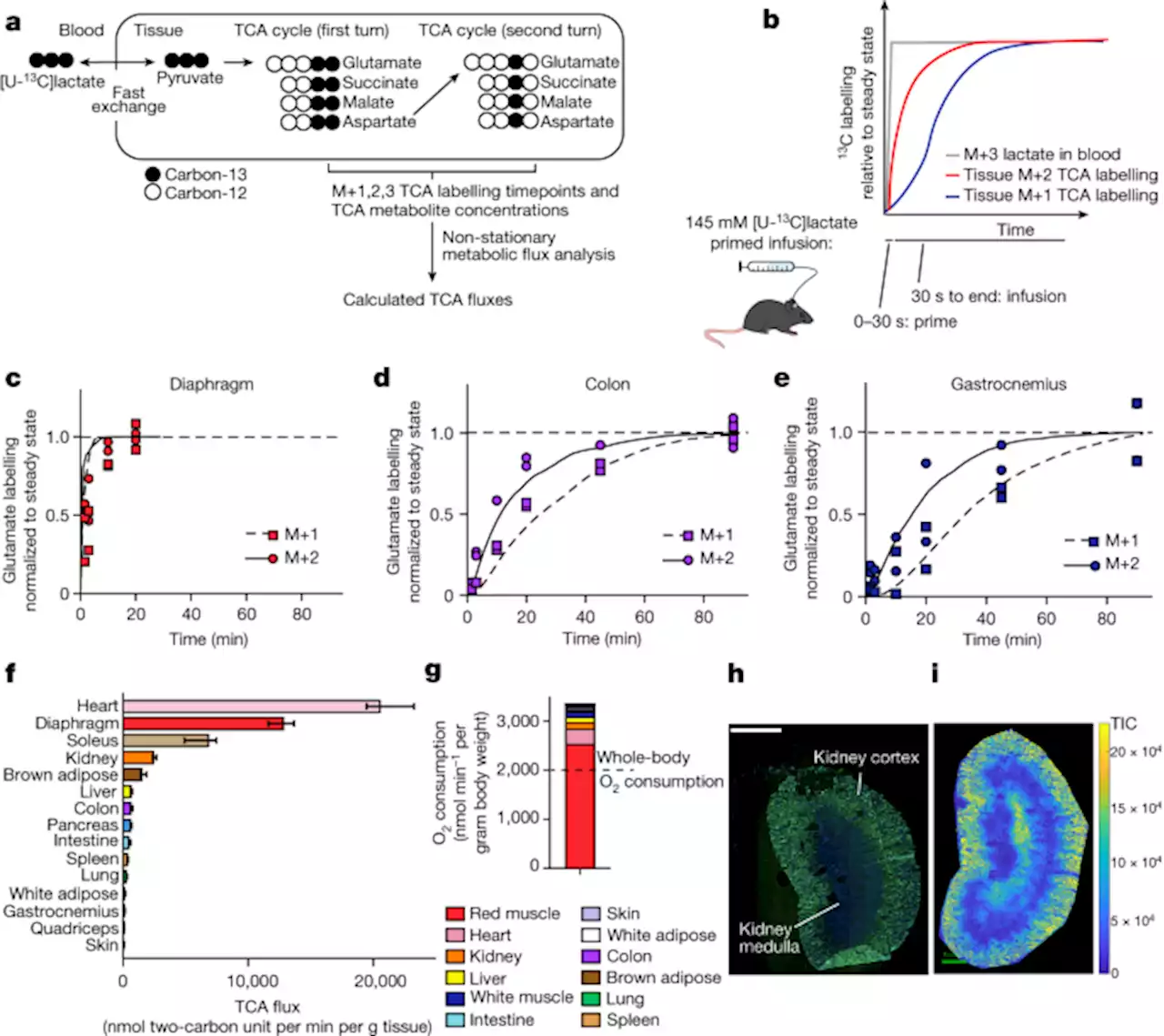The role of autonomic dysfunction and postural orthostatic tachycardia syndrome (POTS) in post-acute COVID-19 POTS Syndrome Coronavirus tachycardia COVID NatRevCardiol
By Suchandrima BhowmikFeb 6 2023Reviewed by Aimee Molineux In early 2020, no one anticipated the long-term consequences of the coronavirus disease 2019 pandemic. During the first year of the pandemic, the focus was survival from acute infection. During mid-2020 emergence of a new group of patients known as post-COVID-19 long-haulers took place.
POTS is indicated to be a major phenotype in the new post-acute COVID-19 syndrome that occurs in about 30 percent of highly symptomatic patients. However, other forms of cardiovascular dysautonomia like hypotension or orthostatic intolerance and vasovagal reflex susceptibility, have also been observed.
United Kingdom Latest News, United Kingdom Headlines
Similar News:You can also read news stories similar to this one that we have collected from other news sources.
 Climate change-fuelled natural disasters and chronic kidney disease: a call for action - Nature Reviews NephrologyPeople with kidney disease are particularly vulnerable to the impacts of natural disasters and extreme weather events. As climate change is increasing the frequency and severity of these events, a robust response is needed to improve disaster preparedness and increase the resilience of these patients.
Climate change-fuelled natural disasters and chronic kidney disease: a call for action - Nature Reviews NephrologyPeople with kidney disease are particularly vulnerable to the impacts of natural disasters and extreme weather events. As climate change is increasing the frequency and severity of these events, a robust response is needed to improve disaster preparedness and increase the resilience of these patients.
Read more »
 Slow TCA flux and ATP production in primary solid tumours but not metastases - NatureAs solid tumours develop, cancer cells shed energetically expensive tissue-specific functions, enabling uncontrolled growth despite a limited ability to produce ATP.
Slow TCA flux and ATP production in primary solid tumours but not metastases - NatureAs solid tumours develop, cancer cells shed energetically expensive tissue-specific functions, enabling uncontrolled growth despite a limited ability to produce ATP.
Read more »
![]() Tracking excess of maternal deaths associated with COVID-19 in Brazil: a nationwide analysis - BMC Pregnancy and ChildbirthBackground The COVID-19 pandemic brought a new challenge to maternal mortality in Brazil. Throughout 2020, Brazil registered 549 maternal deaths, mainly in second and third-trimester pregnant women. The objective of this study was to estimate the excess maternal deaths in Brazil caused directly and indirectly by Covid-19 in the year 2020. In addition, we sought to identify clinical, social and health care factors associated with the direct maternal deaths caused by Covid-19. Methods We performed nationwide analyses based on data from the Mortality Information System (SIM) for general and maternal deaths and the Influenza Epidemiological Surveillance System (SIVEP-Influenza) for estimates of female and maternal deaths due to COVID-19. Two distinct techniques were adopted. First, we describe maternal deaths directly caused by covid-19 and compare them with the historical series of deaths from covid-19 among women of childbearing age (15 to 49 years). Next, we estimated the total excess maternal mortality. Then, we calculated odds ratios for symptoms, comorbidities, social determination proxies and hospital care aspects between COVID-19 maternal deaths and deaths of women of childbearing age who were not pregnant or no maternal deaths. We chose women of childbearing age (15 to 49 years) as a reference because sex and age introduce differentials in the risk of COVID-19 death. Results Most maternal deaths occurred during pregnancy compared to postpartum deaths month by month in 2020 (μ = 59.8%, SD = 14.3%). The excess maternal mortality in 2020 in Brazil was 1.40 (95% CI 1.35–1.46). Even considering excess mortality due to COVID-19 for the childbearing age female population (MMR 1.14; 95% CI 1.13–1.15), maternal mortality exceeded the expected number. The odds of being a black woman, living in a rural area and being hospitalized outside the residence municipality among maternal deaths were 44, 61 and 28% higher than the control group. Odds of hospitalization (OR 4.37; 95
Tracking excess of maternal deaths associated with COVID-19 in Brazil: a nationwide analysis - BMC Pregnancy and ChildbirthBackground The COVID-19 pandemic brought a new challenge to maternal mortality in Brazil. Throughout 2020, Brazil registered 549 maternal deaths, mainly in second and third-trimester pregnant women. The objective of this study was to estimate the excess maternal deaths in Brazil caused directly and indirectly by Covid-19 in the year 2020. In addition, we sought to identify clinical, social and health care factors associated with the direct maternal deaths caused by Covid-19. Methods We performed nationwide analyses based on data from the Mortality Information System (SIM) for general and maternal deaths and the Influenza Epidemiological Surveillance System (SIVEP-Influenza) for estimates of female and maternal deaths due to COVID-19. Two distinct techniques were adopted. First, we describe maternal deaths directly caused by covid-19 and compare them with the historical series of deaths from covid-19 among women of childbearing age (15 to 49 years). Next, we estimated the total excess maternal mortality. Then, we calculated odds ratios for symptoms, comorbidities, social determination proxies and hospital care aspects between COVID-19 maternal deaths and deaths of women of childbearing age who were not pregnant or no maternal deaths. We chose women of childbearing age (15 to 49 years) as a reference because sex and age introduce differentials in the risk of COVID-19 death. Results Most maternal deaths occurred during pregnancy compared to postpartum deaths month by month in 2020 (μ = 59.8%, SD = 14.3%). The excess maternal mortality in 2020 in Brazil was 1.40 (95% CI 1.35–1.46). Even considering excess mortality due to COVID-19 for the childbearing age female population (MMR 1.14; 95% CI 1.13–1.15), maternal mortality exceeded the expected number. The odds of being a black woman, living in a rural area and being hospitalized outside the residence municipality among maternal deaths were 44, 61 and 28% higher than the control group. Odds of hospitalization (OR 4.37; 95
Read more »
 Intrinsic macroscale oscillatory modes driving long range functional connectivity in female rat brains detected by ultrafast fMRI - Nature CommunicationsThe mechanisms which generate fMRI signal correlations across the brain are not fully understood. Here, the authors record ultrafast fMRI signals in anesthetized female rats to demonstrate intrinsic macroscale oscillatory modes which drive correlated activity between distant regions.
Intrinsic macroscale oscillatory modes driving long range functional connectivity in female rat brains detected by ultrafast fMRI - Nature CommunicationsThe mechanisms which generate fMRI signal correlations across the brain are not fully understood. Here, the authors record ultrafast fMRI signals in anesthetized female rats to demonstrate intrinsic macroscale oscillatory modes which drive correlated activity between distant regions.
Read more »
 Virus Watch: A cohort study of COVID-19 in households of England and WalesA new study posted on the pre-print medRxiv* aimed to discuss how Virus Watch provided public health approaches that were effective for the investigation of community incidence, symptom profiles, and the transmission of COVID-19, as well as the effectiveness of the COVID-19 vaccines.
Virus Watch: A cohort study of COVID-19 in households of England and WalesA new study posted on the pre-print medRxiv* aimed to discuss how Virus Watch provided public health approaches that were effective for the investigation of community incidence, symptom profiles, and the transmission of COVID-19, as well as the effectiveness of the COVID-19 vaccines.
Read more »
 New research examines how COVID-19 affects immune-compromised peopleNew research examines how COVID-19 affects immune-compromised people COVID19 Pandemic Cancer Steroids Vaccination Immunization Medical HIV Respiratory Infections PLOSMedicine LivUni EdinburghUni UniLeidenNews UofGlasgow imperialcollege
New research examines how COVID-19 affects immune-compromised peopleNew research examines how COVID-19 affects immune-compromised people COVID19 Pandemic Cancer Steroids Vaccination Immunization Medical HIV Respiratory Infections PLOSMedicine LivUni EdinburghUni UniLeidenNews UofGlasgow imperialcollege
Read more »
